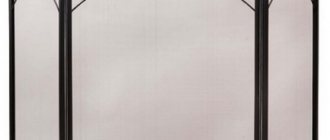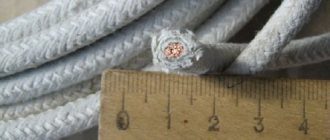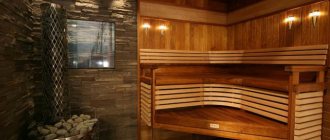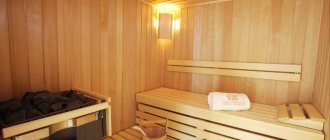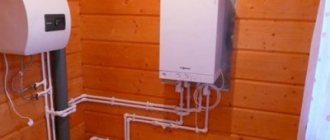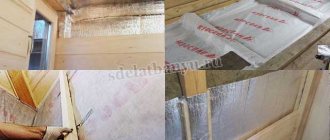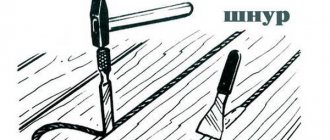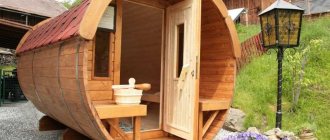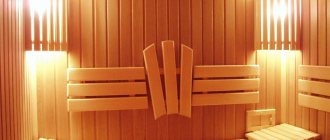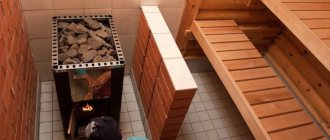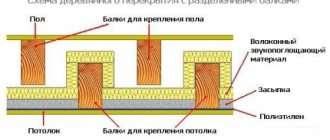Walls in rooms are decorated to protect them from damage and give them a beautiful appearance. The materials used for wall decoration should convey beauty and functionality.
The most important requirement for them is the ability to withstand high temperatures and fire. Non-flammable materials for wall decoration, which are widely used by builders, can solve the problem of fire safety of premises.
All materials come in three types: flammable, slow-burning and non-flammable. There is another category - low-flammable materials.
The degree of flammability is assessed according to the following parameters:
- Ease of ignition;
- Flame propagation speed;
- Ability to generate smoke;
- Toxicity of combustion products;
- The ability to maintain combustion in the absence of atmospheric oxygen.
- Factors affecting flammability
The main factor determining flammability is the feedstock used for their production.
Organic materials: wood, chipboard, fiberboard, plywood, paper, natural fabrics, etc. are flammable. For their fire protection, fire retardants are used to slow down the processes of ignition and combustion.
Fire retardants can be used to impregnate wood and fabrics. Fire retardants only reduce the risk of fire. Materials treated with fire retardants remain flammable. Sometimes they are called low-flammable or fire-retardant.
Non-combustible materials for wall decoration are produced on the basis of mineral components obtained artificially or naturally.
Varieties
Non-combustible building materials are classified according to several criteria. By purpose they are distinguished:
- insulators;
- for insulation;
- non-combustible finishing materials for walls, floors, and ceilings.
In addition, the products differ from each other in the way they transfer heat:
- temperature-resistant due to physical and chemical properties;
- materials that reflect heat.
By release form:
- leafy;
- panels;
- roll
By place of use:
- for interior decoration;
- for installation outside buildings and structures.
Important! In addition to the basic fire-fighting properties, fire-resistant products may have additional parameters. For example, moisture resistance allows it to be used in the kitchen, bathhouse or swimming pool. High sound absorption rates allow the material to be used for insulating music studios, cinemas and other facilities.
Fireproof fireproof panels "Gypsoacryl"
Calculation of the cost of a non-combustible wall and ceiling finishing system
| Name of materials | Purpose of materials | Photo | Consumption per 1m² | Number of m² in 1 package | price, rub. for 1m² with VAT | Packaging, kg/roll. | price, rub. per package including VAT |
| Option 1: smooth wall | Fiberglass canvas VITRULAN VPP 200 Aqua | Creating a smooth base for painting does not require additional use of glue, because... the adhesive composition is already applied to the canvas. Use without finishing putty. | 1,0 | 30,0 | 284,8 | 1,0 | 8 544,0 |
| 2nd option: texture wall | Coating VITRULAN Aqua plus Pigment Fine matting | Reinforcing wall covering, matting texture, does not require additional use of glue, because the adhesive composition is already applied to the canvas. Use without finishing putty. | 1,0 | 50,0 | 200,0 | 1,0 | 10 000,0 |
| Paint TERRACO Terramatt FR | Acrylic paint for interior work, fire hazard class KMO | 0,2 | 110,0 | 16,8 | 22,0 | 1 850,0 |
TOTAL smooth wall RUB 301.8/m²
TOTAL texture wall RUB 216.8/m²
The price is given as of 12/01/2018 for an object from 1000 m²
All system materials have appropriate fire certificates.
Definition
Non-combustible materials are products that, when exposed to flame, sparks, high temperatures, electric current, or chemical reactions, do not ignite, do not smolder, do not spread fire, or emit smoke. There are natural and artificial materials. In addition to fire-fighting qualities, other parameters are also important for building materials:
- deformation when wet;
- deformation when heated;
- heat conductivity;
- degree of moisture absorption;
- bending strength in dry and wet conditions;
- density;
- strength;
- tensile strength;
- specific viscosity.
Additional qualities determine the possibility of use for certain purposes.
Rolled refractory materials
Types of substances
It is customary to distinguish three main types of non-flammable substances of different origins.
The first type includes solid materials presented in various structural and aggregate states. These can be bulk substances, structures, and individual piece products. This number includes:
- various rock samples, both hard and softer, including limestone, dolomite, marble;
- concrete and reinforced concrete products;
- loose rocks, including gravel, sand, crushed stone;
- binders - chalk, clay, cement, gypsum, lime, plasters, mortars;
- cast iron and steel products of various types and designs - angles, channels, beams;
- non-ferrous metals, including bronze, copper, brass, aluminum alloys;
- mineral fibers, such as basalt;
- various types of textile materials, including asbestos fabric, basalt fiber;
- regular and fire-resistant glass.
Liquid substances:
- foaming agents and detergents;
- all types and conditions of water, from a drinking source to use as a coolant;
- synthetic liquids that cannot burn;
- acids, alkalis, salts in the form of an aqueous solution.
Gaseous substances:
- carbon dioxide;
- nitrogen;
- freon;
- argon.
Scope of application:
- for roofing, for example, natural tiles;
- for finishing walls and ceilings, partitions and ceilings;
- for the installation of indoor fireplaces, stoves, boilers, potbelly stoves, electric stoves, stoves, including stove chimneys, combustion ducts and other heating system communications;
- for cladding facades.
On a note! Since civil and industrial facilities require the presence of people, NG is subject to requirements for environmental safety and compliance with sanitary and epidemiological standards.
Until recently, NG materials were used to insulate heating objects, but now materials are on sale that not only have fire-resistant properties, but also aesthetic qualities. They are used for finishing and simultaneously perform two functions. Thus, there are wall panels with a bamboo-like front surface, wallpaper with a metallic coating, and others.
Termoizol
Where are they used?
Most of these non-combustible materials are used in the construction of construction projects, for backfilling, improvement of adjacent land plots, and some substances are used as coolants and fire extinguishing agents.
The most important area of application of non-combustible materials is the construction of facilities, equipping them with external and internal utilities, because only their use in greater proportion with products made from flammable substances, for example, wood, can increase the fire resistance of buildings and structures, including those with an increased risk fires due to the characteristics of technological processes and fire load.
If recently the floors in multi-storey residential buildings and public buildings were made of wooden planks, now they have been replaced by cement-sand screeds covered with fire-resistant non-combustible linoleum, and the wall, ceiling, room partitions to level their surfaces are sheathed with fire-resistant fireproof cardboard on a gypsum basis .
Chimneys, stove pipes of residential buildings, baths are made mainly of solid brick, and fire-resistant cuts in places where they intersect floors and roofs of buildings are sealed and separated from combustible wood structures with fire-retardant mastics, pastes, and plasters.
For the construction of objects, piece building materials are most often used - brick, foam concrete blocks, reinforced concrete finished products; for external and internal finishing, insulation, both sheet and roll, bulk finishing, heat-insulating materials.
Considering the cold climate in most regions of our country, non-flammable fibrous heat insulators are in demand during the construction, repair of construction projects, and engineering communications of populated areas - from the usual mineral wool to fire-retardant basalt material, which are widely used for the following purposes, for:
- thermal insulation with rolled, semi-cylindrical foil elements of pipeline systems transporting water and its solutions, including water and foam fire extinguishing installations;
- insulation of ceilings of upper, technical floors; window doorways, floors, roofs;
- thermal insulation of attic floor structures;
- soundproofing of premises, buildings related to entertainment establishments, public catering establishments.
Thermal insulation of pipelines with non-flammable materials
The scope of application of various metals and their alloys is wide:
On this topic ▼
Fire safety during construction
- Steel - for the production of building load-bearing structures, as reinforcement for prefabricated reinforced concrete, monolithic structures of construction sites.
- Copper, aluminum - as cores of wires, cables, current-carrying elements of power supply systems.
- Cast iron, steel - for the manufacture of housings for industrial and engineering equipment, pipes of various diameters, shaped elements for their connection.
Although for some water supply systems, for example, water, foam fire extinguishing systems, and finely sprayed water extinguishing systems, it is acceptable to replace steel pipeline products with fire-resistant plastic pipes, but in general there is still no alternative to the use of non-flammable metal products.
Tissue NG
Non-flammable fabrics are widely used in construction; they are made from the following types of raw materials:
- Polyesters. The threads are synthesized from various polyesters and phosphorus compounds. Weaving - any: from jocquard to velvet. Fabrics are characterized by non-flammability, strength, resistance to ultraviolet and infrared radiation, and safety for human health. When exposed to direct fire, it shrinks in size but does not release toxins.
- Carbon. These are materials obtained by synthesis. They consist only of carbon and are characterized by high fire resistance. For example, filaments of electric lamps are made from such materials. In addition, these NGs are resistant to chemicals, stretching, deformation and temperatures above +300 degrees C.
- Silica. Similar to quartz fabrics. Resistant to temperatures, temporarily able to withstand up to + 2000 degrees C. Environmentally friendly fabric, even filters are made from it.
- Quartz. Fibers are drawn from the mineral at high temperatures. Externally, the material resembles fiberglass, but can withstand heating of more than +1300 degrees C, while the properties do not change. The fabrics were used to make spacesuits for Soviet cosmonauts.
- Aramid. This is a polymer product. The plastic has transverse and longitudinal stitching. It is produced using different technologies and has different characteristics depending on the specific technique. The weave of the fabric can be different. The product can withstand temperatures up to +370 degrees C and is very durable. The list of aramid materials is constantly expanding.
- Asbestos. This group is made from fine fibers of natural silicates. It can withstand heating up to temperatures up to +500 degrees C and has good insulating parameters. But asbestos is not safe for human health, so it should not be used as a non-flammable material for finishing walls in a residential building or office, or for other interior work. It is good for external cladding and for cladding special premises, for example, boiler rooms, garages, hangars, gazebos, electrical panels and other objects.
You should understand! There are fabrics on sale that do not burn due to treatment with special flame retardant compounds. These impregnations suppress combustion and are widely used for fire-fighting purposes. The price of such NG fabrics is low, so they are widely used. But they retain their properties for a certain time, mainly 1 year. After expiration, re-processing will be required.
Universal fire-resistant NG
Class confirmation
Confirmation of the flammability class is carried out both in laboratory conditions and in open areas using special equipment. In this case, standard techniques are used, different for non-combustible and combustible building materials.
In the case when the product being tested consists of several different materials (or layers), each material (layer) included in it is necessarily tested for flammability, and the final result - the flammability class assigned to the product as a whole - will be equal to the highest class of all , assigned to individual components of the product.
During laboratory testing, special requirements are placed on the room - it must be maintained at room temperature and normal humidity, there must be no drafts and excessively bright natural or artificial light that interferes with taking readings from the displays. The instrument used must be calibrated, tested and preheated.
At the first stage, the sample is measured, kept at room temperature for at least 2-3 days, then fixed in a special oven cavity and the recorders are turned on instantly (a delay of up to 5 seconds is allowed).
The oven is then turned on and the sample is heated. Heating is stopped when the temperature change recorded within 10 minutes is less than 2°C - this is considered “reaching temperature balance”.
Then the sample is removed from the oven, cooled in a special device (desiccator), after which weighing and measurement procedures are carried out.
Sheet and slab NG materials
Sheet and slab materials can be insulators, insulation materials, non-combustible panels for interior decoration and other types of building materials. Today, the list of such products has thousands of items. Here are the most popular NG materials produced in slabs and sheets:
- Cement particle boards. This NG material is used for constructing building frames, leveling floors, constructing partitions and other purposes. They cut perfectly and are resistant not only to temperatures and fire, but also to moisture.
- Decorative wall panels FIREPROTEC YPL. Environmentally friendly panels created on the basis of gypsum particle board can be used even in preschool institutions. They are characterized by high fire safety and aesthetic parameters.
- Impact board. This is a non-flammable panel, covered on top with HPL, which belongs to the group of flame-retardant materials. The ends of the panels are also protected. The board has high aesthetic parameters, including the texture of valuable wood species. It is hygienic, fire-resistant, moisture-resistant, and environmentally friendly. It can be installed in preschool educational institutions, sports facilities, and public places.
- PVTN. These vermiculite boards can be used in hot industries, such as in a metallurgical workshop. In addition to their basic properties, they are moisture resistant and have low thermal conductivity. They are used for arranging cable routes and protecting banks and archives from fires.
- Fire-resistant GVL. This is the familiar drywall, but it has fire-resistant properties. It holds the fire for half an hour. These sheets are gray in color and easy to process.
- Fiberboards. This is a product made using wood fiber pressing technology. Cement and a special binder are added to it, which makes the slabs non-flammable and resistant to biological factors. The slabs have a two or three-layer structure. It is quite easy to cut, creates good acoustics, and is attached to structures with self-tapping screws.
- SKL panels. They are made from calcium silicate raw materials. They are light and durable, environmentally friendly. SKL are used for finishing any premises, including baths and swimming pools. They are characterized by ductility and can withstand heavy bending loads.
- Gypsum fiber sheets. NG material is made from cellulose waste paper by pressing in a semi-dry state. It has high technical and operational properties: strength, moisture resistance, ability to withstand heavy loads, low cost. They are used to line walls, make suspended ceilings, and level floors.
- Oriented strand board. It is produced from shavings and adhesive resin through high-pressure pressing. Thickness varies from 6 mm to 3 centimeters. OSB is durable; in terms of this indicator, it is 3 times higher than MDF and chipboard. With such indicators, NG material is very flexible, so it is often used for cladding bay windows, attics, verandas and gazebos. OPS is in high demand in suburban low-rise construction.
An example of installing fireproof boards before installing a stove
Criterias of choice
Before purchasing thermal insulation materials, you need to decide what goals are set for the raw material and whether it will comply with the standards.
Main selection criteria:
- To achieve maximum thermal efficiency, you need to choose insulation with a low thermal conductivity coefficient. No more than 20-25% of heat loss occurs on the walls, so you need to approach the issue comprehensively and create the most airtight structure possible.
- Price policy. High-quality construction raw materials cannot be cheap. An unreasonably low cost indicates a violation of production technology and low quality of raw materials.
The material must be bioresistant and have excellent wet strength properties. For interior decoration, it is important that the insulation is environmentally friendly and safe.
Basic requirements for NG materials
Whatever NG material is purchased for - for a suspended ceiling structure, for upholstery of furniture or an entrance door, for insulating a summer house, for wall cladding or for insulating a stove in a bathhouse, it must meet the following requirements:
- effectively prevent fires of any nature;
- for rooms where people are located, choose environmentally friendly products;
- In wet rooms, moisture-resistant NG materials are used.
An incomplete list of NG materials can be found in GOST 30244.94 and SNiP 21.01.97.
Firebasalt
Heat-resistant materials to protect walls from heating: operating features
To protect walls from heat, various materials and their variants are used.
The choice and operating features will be influenced not only by the heating source, but also by the specifics of the room itself. The use of specialized materials to protect walls from heat and fire is an important and mandatory step in the process of addressing fire safety issues. Based on the individual needs and preferences of each owner, as well as the characteristics of a particular room, you can make the right choice from a huge range of material offers on the market.
Light stone panels in Moscow on favorable terms
"Platforma Doma" is a full-cycle manufacturing company specializing in the production of non-combustible panels for finishing the facade and plinth. We sell products without intermediaries and therefore can offer customers favorable purchasing conditions. Our team works quickly and harmoniously, starting cooperation with the customer by processing the order and clarifying details. And then the company employees:
- Measurements are taken directly on site.
- Calculate the amount of material required to decorate the facade.
- They sign an agreement.
- The cladding is shipped and delivered to the customer.
- The panels are installed on the facade of a house or bathhouse.
The production facility offers the following services:
Dual purpose cladding
Non-combustible concrete facade panels for exterior finishing can rightfully be called dual-use products. The secret of such multifunctionality is polystyrene filler, which, firstly, lightens the concrete mixture and allows you to reduce the weight of the panels, and secondly, “works” as insulation. So, if you decide to decorate the facade of a country house or private cottage with such panels, you don’t have to spend money on insulating the premises. Fitted tightly to each other, they will provide a sufficient level of thermal insulation, help avoid heat loss and create a comfortable microclimate in the home.
